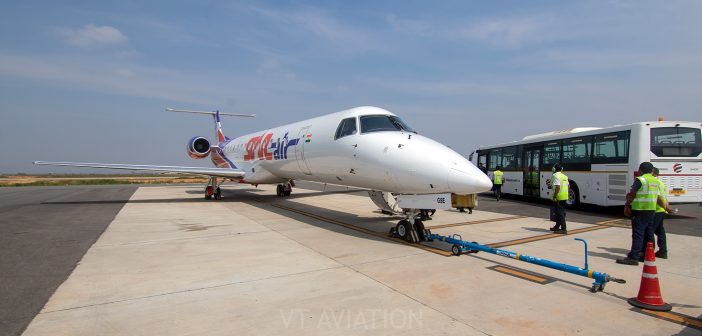Indian airlines are rapidly expanding their fleets and international networks to cater to growing global demand. Major carriers such as Air India, IndiGo, SpiceJet, Akasa Air, and Star Air are all in the midst of aggressive expansion strategies, positioning themselves as key players in international aviation.
Air India’s Transformation and Fleet Modernization Air India, under the ownership of Tata Group, is undergoing a significant transformation. With plans to add over 400 weekly flights, the airline is enhancing both its domestic and international services. This includes increasing the frequency of flights on major international routes such as Mumbai-Singapore, Delhi-Bangkok, and Delhi-New York. Air India’s fleet modernization is central to this growth, with the addition of over 30 new aircraft, including Airbus A350s and Boeing 777s, set to enhance long-haul travel capacity. Furthermore, Air India is poised to add four new international destinations, further expanding its global footprint.
IndiGo’s Global Push IndiGo, India’s largest airline by market share, continues to strengthen its presence in international markets. With a focus on short-haul and regional routes, IndiGo has expanded its operations in the Middle East, Southeast Asia, and Europe. The airline is also ramping up its fleet, with plans to add a mix of narrow-body aircraft, including A320s and A321s, to its existing network. This expansion is in line with the carrier’s strategy to offer affordable international travel options for both leisure and business passengers.
SpiceJet’s International Strategy SpiceJet, known for its low-cost model, has been progressively increasing its international presence. The airline has introduced new routes connecting India with destinations in the Middle East, Southeast Asia, and Africa. As part of its fleet expansion, SpiceJet has added Boeing 737 MAX aircraft, which are designed for longer international routes, helping the airline compete more effectively in the global aviation market.
Akasa Air’s Bold Entry Akasa Air, the newest player in the Indian aviation industry, has made impressive strides since its launch in 2022. The airline is focusing on both domestic and international growth, with plans to expand to international markets like the Middle East and Southeast Asia. Akasa is steadily building its fleet with Boeing 737 MAX aircraft, which will support its plans for both domestic and international routes in the coming years.
Star Air’s Niche Expansion Star Air, a regional carrier based in India, has been steadily growing its fleet and network. While its international ambitions are not as aggressive as other carriers, the airline is expanding to nearby destinations in Southeast Asia and the Middle East, complementing its regional operations within India. Star Air’s fleet expansion is focused on regional aircraft, including the Embraer E175, to support short-haul international routes.
The Economic Impact of Airline Expansions The rapid fleet expansions and international route developments by Indian airlines are not just transforming the aviation sector—they are also boosting the economy. Thousands of new jobs are being created across various segments of the aviation industry, including pilots, cabin crew, and ground staff. These expansions are expected to generate significant economic activity, not only in the airline industry but also in related sectors like tourism, logistics, and infrastructure development.
As India’s airlines continue to grow their fleets and expand their international networks, the country is poised to become an even more dominant player in global aviation. The investments in fleet modernization and international expansion will contribute to India’s standing as a major hub for both domestic and international air travel.






